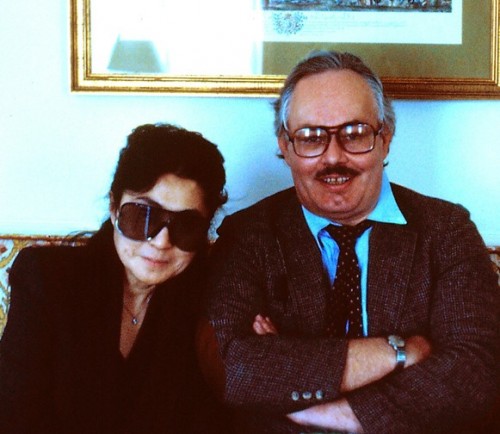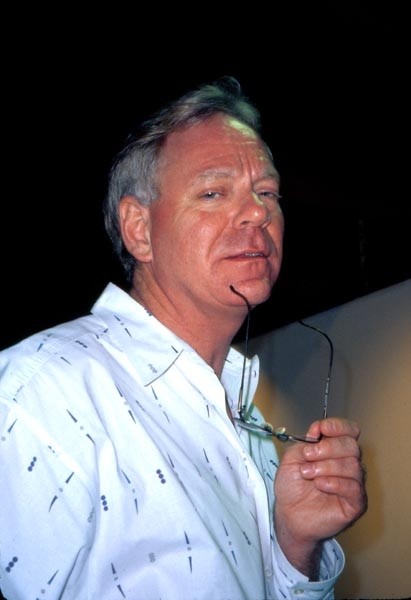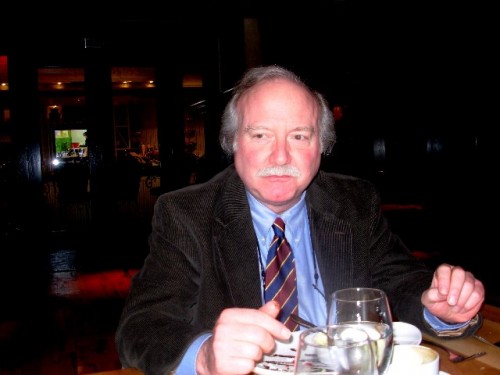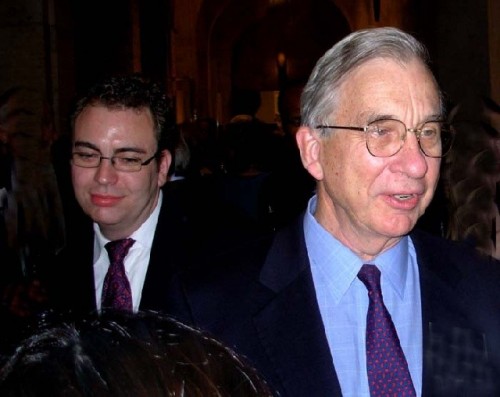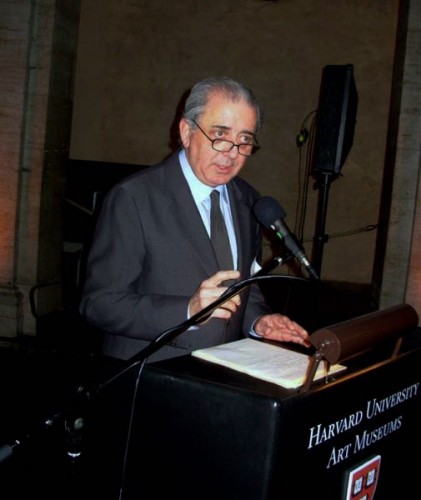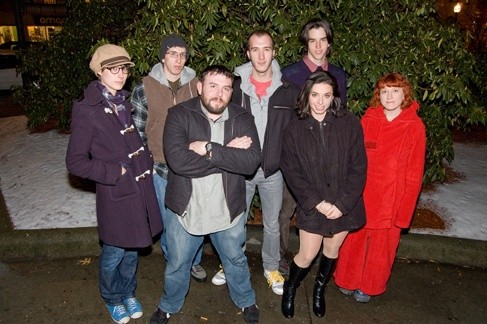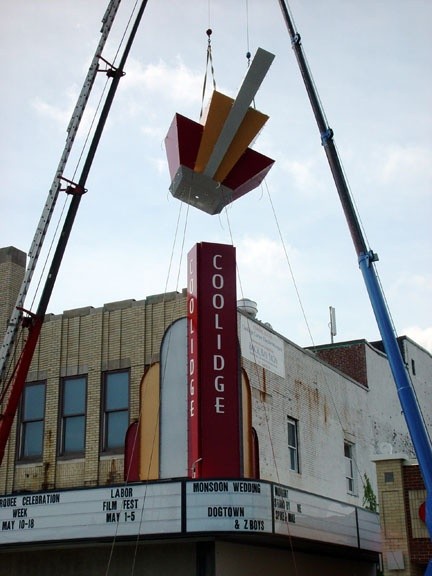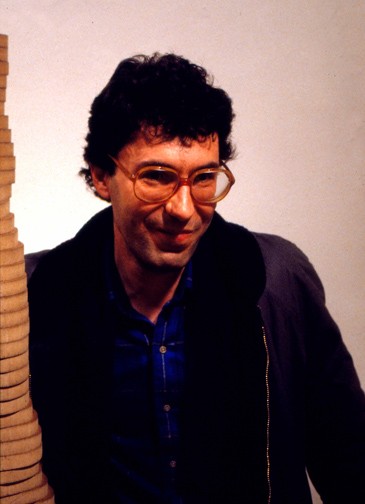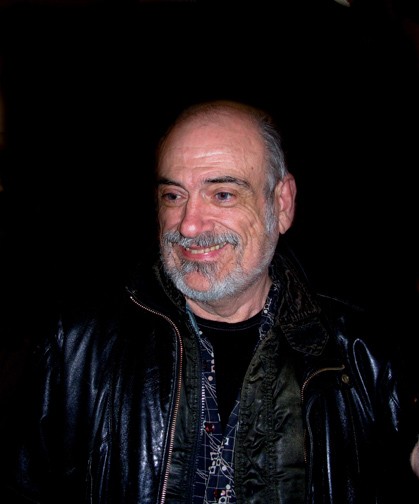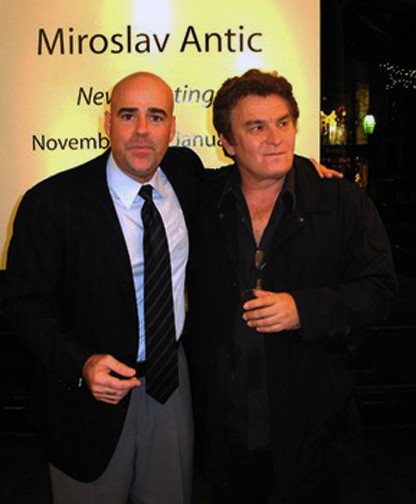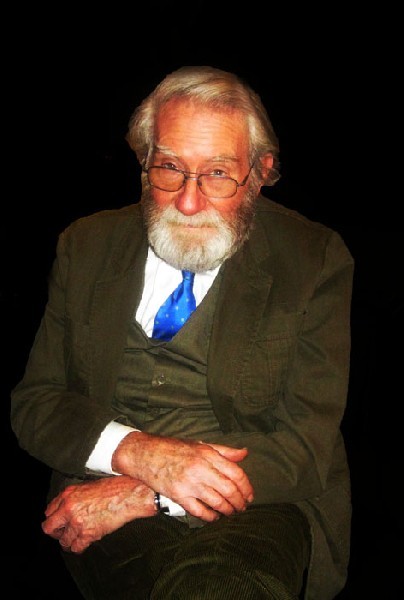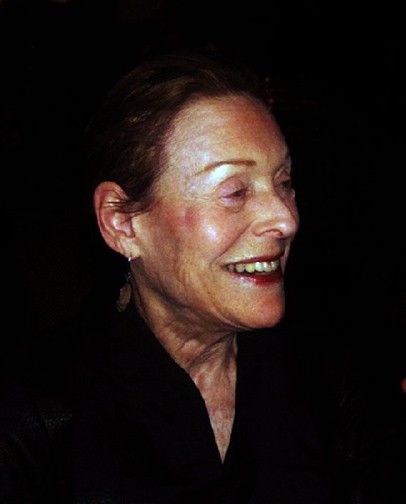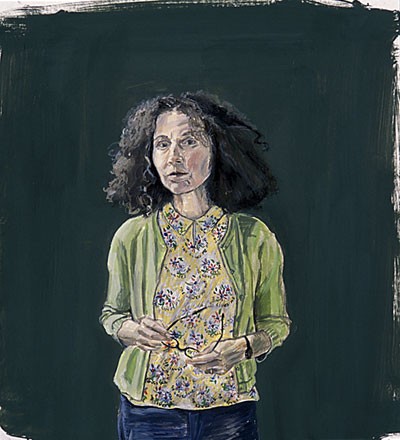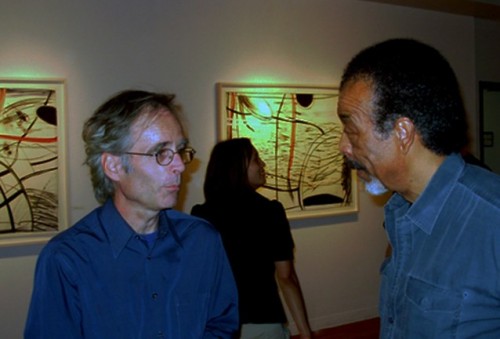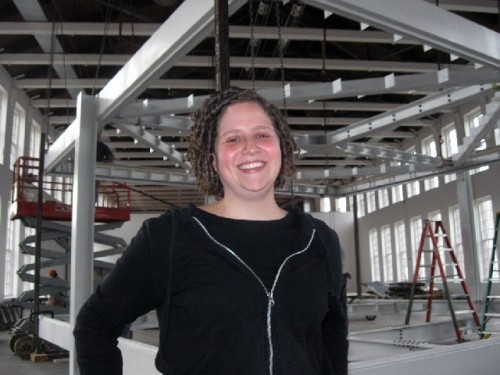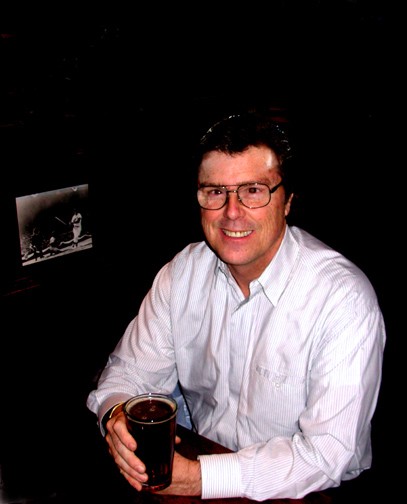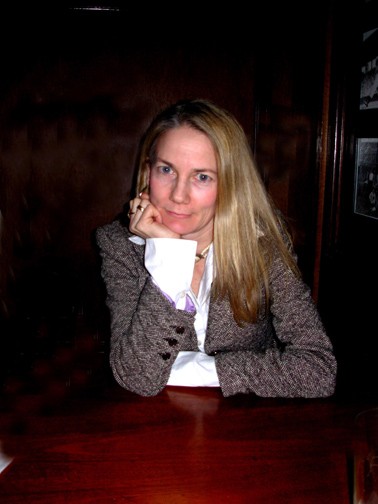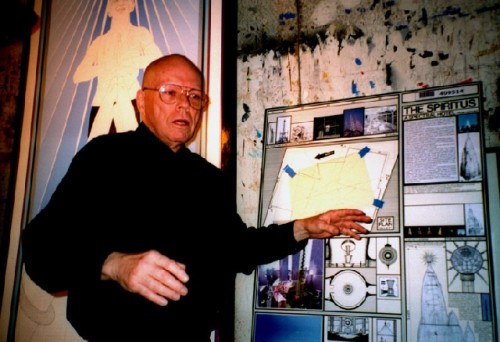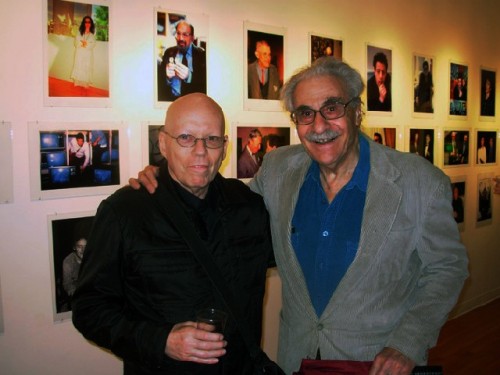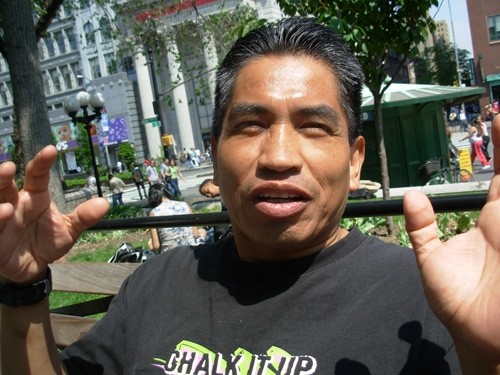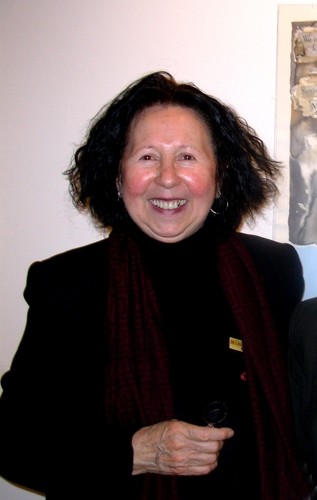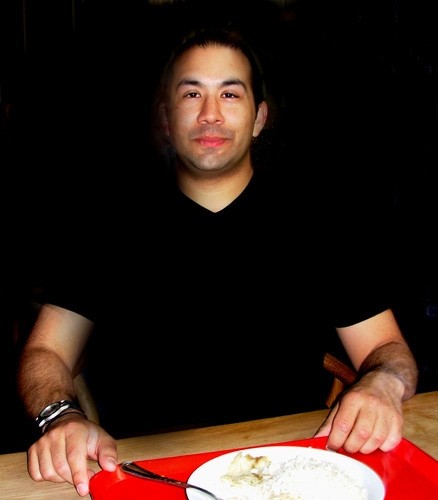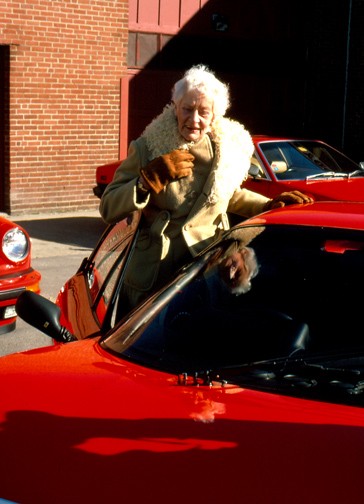Hat Dance: Cook and Giuliano Three
The Critic as Artist and Curator
By: Greg Cook and Charles Giuliano - Feb 07, 2011
Greg Cook I went back and reread your take on the 2010 DeCordova Biennial. You criticized the ICA, MFA and DeCordova’s past attention to local art. The MFA for ignoring it. DeCordova for dull, narrow thinking. What do you think are the problems? Is anyone here or elsewhere doing it right? What can be done about it? How have you addressed it as a curator? And as a critic?
Charles Giuliano: Right now I am at some disadvantage to answer your very appropriate questions. Five years ago we moved from East Boston to the Berkshires. So I am no longer in the thick of Boston and to some extent my psychic battery has run down. Other than the major museums there is not much of an art scene here in the Berkshires. We get to New York a few times a year and try to visit Europe and the major art events at least once a year.
Our attention has shifted more to the performing arts. There is a richness of that here and we have plunged in. We see Broadway shows as well as museums and galleries when in New York.
So there has been a paradigm shift for me away from decades of functioning within the Boston arts community with mixed results.
We were in Boston last fall for the opening of the new Museum of Fine Arts. For Berkshire Fine Arts we had coverage by Mark Favermann on the architecture. We were colleagues at Art New England for decades. Also my old friend and colleague, David Bonetti, formerly of the Boston Phoenix, later San Francisco Chronicle/ Examiner and St. Louis Post Dispatch, also wrote on the MFA opening and installation.
It was powerful and important coverage. David, Mark and I have a lot to say and this was the right occasion. David recently returned to Boston and I am sure many find his views of great interest. He is now reporting for us on opera in Boston. It has been a new venture for him and we are thrilled with his coverage. Berkshire Fine Arts has initiated a series of interviews, such as this, in an attempt to capture the oral history with an emphasis on the arts and counter culture of Boston/ Cambridge.
To pick up the thread of your questions I feel that for all of those years under Dr. Paul Master Karnik the DeCordova was terminally dull and mediocre. Rachel Rosenfield Lafo and Nick Capasso went along with Karnik’s provincial lack of energy, innovation and vision. As the primary museum devoted to New England this was indeed tragic. In essence it cost us a generation of potential creativity.
With their mandate to focus on the art of New England they lacked a wider vision. I feel that you have to travel and see work on a national and global level in order to put “local” art into an accurate perspective. The DeCordova curators made lots of regional studio visits, and knew that scene, but their shows and selections of artists were low ball, crafty and provincial. It’s nice to keep up with Maine and Vermont but that doesn’t mean much if you are out of touch with what’s happening in New York, LA, Europe and Asia. The best curators are constantly on the road. The museum has a new director and fresh energy. There has been positive critical response to the changes.
This summer I spoke with Denise Markonish of Mass MoCA. She is doing a Canadian art project and expects to complete 500 studio visits before she selects about 30 artists for the show. That kind of leg work is so important. Of course, she gets funded by working with a major museum. So it is tough for critics, who don’t get that support, to keep up with the Biennial circuit. We do the best we can with limited resources.
You asked about my role as a curator. From the beginning, having graduated from Brandeis as a studio major, and art history minor, there has always been an identity crisis. We may aspire to one role but find ourselves recognized for another. My mentor, Professor Creighton Gilbert, told me as an undergraduate “If you want to be an artist study art history.” That has proved to be true. It earned me a living teaching art history. Also, I have functioned, from the beginning, as an art critic. But, as you know, that doesn’t really pay the bills. I got hired by the Herald Traveler as a jazz/ rock critic. Now and then I managed to stick in an art review. For a number of years, after the Herald, I wrote on music for a number of publications, including the Patriot Ledger, which also allowed me to write the occasional museum piece.
An opportunity came up to run the gallery program for the New England School of Art & Design which was then merging with Suffolk University. The move from Newbury Street to Boylston Street occurred just before I took over. The outgoing gallery director, Addison Parks, who recommended me, was distracted. So there were physical issues with the space which I had to fix.
I started with no significant faculty support and little or no budget. Addison had run a very hip and spontaneous program. He put up a lot of work often for a week or two. There was no media or mailing list to start with. I was hand writing invitations, installing shows, organizing openings, and planning the next show. As well as teaching.
Initially, the program was not known. The immediate issue was convincing artists to show with us. As a critic, I knew lots of artists. I was able to think of themes and call artists. Rarely did I actually make studio visits. There wasn’t time for that. I would just say to the artists bring me your best work.
Unlike Addison’s serendipitous program I organized monthly shows. There was also a two month interval in the spring semester when the faculty hung four, two week, student shows. That gave me a breather. I tried to organize the strongest shows from September through March. What to do in the summer was a toss up. That’s when I scheduled more experimental shows with emerging artists. Artists didn’t like being shown in the summer.
Laura Chasman, objected saying, if I am good enough to show then why not in season? Her work was not well known and I told her it was summer or not at all. I had seen her work during Open Studios. She later won the Maud Morgan prize at the MFA. In think our show gave her timely recognition.
After the first year one of the department chairs approached me. “I opposed you for gallery director” Laura Golly, the head of the Graphic Design program said “But I think you have done a terrific job.” That was much appreciated. The other chairs were not so supportive.
During a meeting with the director of NESAD, I was blind sided by two of the chairs in an attempted coup. They tried to replace me or order me to work on the shows that they wanted. I had autonomy and answered only to the director, Bill Davis, in annual reports. Davis listened to what they had to say. He responded that I was doing a good job and would listen to their input. “Charles runs a one man operation” he said. “Frankly, I like it that way.”
With each new academic year I was evaluated and rehired. There were incremental budget increases. I fought to budget $2,000 for faculty solo shows. The money was used for catalogues, or to frame and prepare the work. We had one or two faculty shows each year. It is important that faculty maintain professional standards and students get to see their work. Too often when faculty are tenured, or have full time appointments, they give up on careers as exhibiting artists. They stop trying and that defeatism impacts their teaching,
We started to get Globe, Art New England, and Phoenix reviews. That helped. Because of our in town location there was nice buzz and lots of artists came to our openings. The program came to be respected and it was easier to work with the best local artists.
For the most part, I focused on artists I knew and had reviewed over the years. When we showed the visionary artist, Paul Laffoley, for example, he had not shown in Boston since the closing of the Stux Gallery almost 20 years earlier. We won an AICA award for that show. There was no Globe review. A year later Ken Johnson, now back at the Times, wrote about Laffoley, in a Sunday Globe feature, as one of the most important Boston artists. We showed a number of artists doing important work whose careers had lapsed. It’s an all too common phenomenon and I was excited about giving them recognition.
For a lot of curators showing hot young artists is a career move. That doesn’t work when you show established but neglected artists. But it gained the program a lot of respect. It created very different relationships for me than those of a critic. As a critic, you write about the work after the fact. As a curator I got to develop projects and work closely with artists. That also changed my relationship to their work. I always wrote critical essays as gallery handouts. So, even if there was no review, the artists ended up with a text.
When I put up the web site Maverick Arts, in 2000, that led to the Beer and Burgers series. My last class on Wednesdays ended at 5 PM. There was a great bar across the street with a happy hour menu including huge burgers for $1.99 and other items. It got to be my weekly night out. I invited different artists, curators and gallerists to meet with me. Over beers I took notes and wrote stories. On a number of occasions I was meeting that individual for the first time. When women joined me they ordered cranberry juice, or a diet Coke. That kind of took the fun out of hoisting a couple of pints with me mates. Now that we are in the Berkshires I really miss that access to artists.
With some stability to the program I was able to take on more ambitious projects. When the College Art Association met in Boston we worked with a local organization to put up a show of New England Women of Color. There was a show focused on ten women who formed a crit group. We had a show during a glass art conference.
Working with the Brush Gallery, in Lowell, we collaborated on a Beat show during the annual Kerouac Festival. That was a fabulous show. I had met Allen Ginsberg, and arranged to show his work (through Tibor DeNagy Gallery), and Elsa Dorfman’s portraits of him. But he died just before the show and the gallery withdrew as did Dorfman. Linda Poras, for Brush Gallery, borrowed Elsa’s portraits from the Danforth Museum. I owned a Ginsberg and some small Dorfmans which we showed. I also borrowed wonderful photos from Gerard Malanga and Fred McDarrah. I bought some works they loaned and have a small Beat collection. We also borrowed a Ferlinghetti painting.
There was a poetry reading in the gallery organized by Professor Fred Marchand. He also helped to organize a show by an artist from Viet Nam. Fred had traveled to Viet Nam and was working with their writers and poets. I worked with the Humanities Department to show work from Chile. We visited London and brought back a show Four from the Royal College of Art. Otto Piene, the director of the Center for Advanced Visual Studies at MIT did a show with us. My wife, Astrid Hiemer, worked with Otto for a decade. We also did a show with Wayne Anderson the original director of MIT’s Hayden Gallery. I am proud of our show with the realist painter, James Aponovich. We had a great show with the New York painter John Moore. I am proud of our shows with mid career artists like Martin Mugar, Rick Harlow, and Jo Sandman. There was a project with the Parisian painter, Raphael Mahdavi, which we also installed at the French Library. I took a show of NESAD faculty to Gallery Gora in Montreal.
There was always a student program for the exhibitions. The carrot was that we served free pizza during noon talks. Even faculty showed up for a slice. We also tried to vary the exhibitions including architecture, design, fiber, glass, and other media. Karl Eigsti, who ran the graduate theatre design program at Brandeis, had a retrospective with us. Mark Favermann showed his Olympic and sports design projects, as well as, a maquette for the Coolidge Corner Cinema marquee.
One of my favorite shows was Los Cuatro Grandes. It was a riff on Mexico’s famous Los Tres Grandes. I showed four of the best Boston painters: Domingo Barreres, Miroslav Antic, Gerry Bergstein, and Robert Ferrandini. The feminists were pissed. Which, of course, just delighted me. The show became poignant when Ferrandini suffered a stroke just before we hung the show. Gallery Naga was very supportive in lending work.
I later regretted not including Thad Beal who is a terrific painter. We later showed him but I missed the opening as we were traveling in Europe. Thad was very gracious about that.
Out of the blue, an artist contacted me because she liked Maverick Arts. I asked who she is. She said Google me. It proved to be the distinguished Native American artist Jaune Quick to See Smith. We visited with her in New Mexico and Jaune made all new work which we showed. She came and gave a lecture at Suffolk and met with NESAD students.
That led to another show Native New Yorkers with four artists, two of which, Jason Lujan (Apache) and Mario Martine (Yaqui) came for the opening and a seminar. Jeffrey Gibson (Cherokee), who shows with Samson Projects, and Peter Jemison (Seneca), were unable to join us. Jason and Mario had a wonderful interaction with the students. That came at the end of my time at Suffolk and I regret that I didn’t have more opportunities to show Native artists.
The program got a huge boost when James Manning worked with me as an installer. He had formerly been my student but neither of us recall much about that. Jim had worked with Addison and was installing for a number of galleries around town. He has an amazing involvement with emerging artists. Other than Bill Arning, when he was at MIT, nobody knows the Boston scene better than Manning. We truly became collaborators and co curators. It was great to talk through and plan shows together.
We managed to secure a second gallery as our project space. That meant that we were putting up two shows each month. It was twice the work but we were able to be very fresh and experimental. Each year Jane Hudson invited me to speak with her graduate students at the Museum School. Meeting those artists led to a number of project space shows.
Arthur Dion, of Gallery Naga, approached us about showing the finalists for the annual Paine Awards. That student art project was supported by Boston Art Dealers Association (BADA). Jim took over and did a great job installing all over the school. It was a huge success.
I asked Jim to curate the summer shows which we billed as Star Search. He organized really terrific exhibitions. Some of the artists are now well known like Shepherd Fairey. After a few years Jim didn’t want to do summer shows. So we worked him into the regular season. When I retired, Manning served as acting director, while finishing a degree in arts administration at BU. Currently, the gallery director is James Hull, formerly of Green Street Gallery.
My career as a curator ended when we moved to the Berkshires five years ago. For one year Astrid and I ran the Eclipse Mill Gallery in our loft building in North Adams. The program had run into a dead end. For the season of 2008 we tried to get it back on its feet. It was a ton of work. We resigned but others have stepped up to keep it going. This past season, Astrid and I curated a show Illustrious. It was a great project but, coming on top of a hectic summer, we were exhausted.
The gallery occupies a great space in the artist/ loft complex. Through the effort of many artists, including the current director, Gail Sellers, it is regarded as one of the best alternative programs in the Berkshires. This coming season the Eclipse will collaborate with Mass MoCA on an ambitious student art project.
I stated that there is an identity crisis from wearing so many different hats in the arts. Perhaps it dilutes your impact and spreads you thin. The conventional wisdom is that you should focus on doing one thing well. That makes sense.
The other side of a multi faceted approach is that there is always a challenge and learning curve. You are never on a secure footing so there is no opportunity to get lazy or smug. It means that you are constantly reinventing yourself. While trying to maintain standards and professionalism. You never want to fail or embarrass yourself. There are always naysayers who are poised to take a shot at you.
As a critic you dish it out, so to speak. When you switch hats, as a curator or artist, expect to take some lumps. It’s payback time. That has surely happened. Some years back, for example, Carol Ann Mehan included me in a show at the Boston Center for the Arts. Her boss questioned her about showing the work of a “critic.” She said that she believed in the work. Christopher Millis reviewed the show for the Phoenix. He discussed every artist in the show and did not mention me. I just didn’t exist.
I confronted him about that. He said you can’t be a critic and an artist. You’re a critic, not an artist. That’s wrong. Vasari, Donald Judd, Peter Plagens, and Fairfield Porter come to mind. I think being a critic informs you as an artist. Being an artist makes me a better critic. I function in both roles simultaneously. Currently I am working on a winter project to scan and print decades of slides and negatives. These are being compiled into portfolios of 13 x 19” prints of musicians and artists I photographed, reviewed and interviewed.
It is not my responsibility to clarify my identity for others. Let's say it is just hard and challenging enough to live a life in the arts. For me that has meant being totally involved. On any given day that activity may be quite different. But, for me, it all comes from the same place

